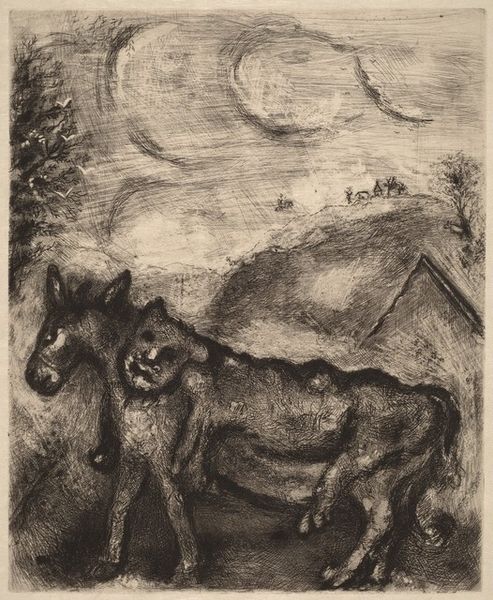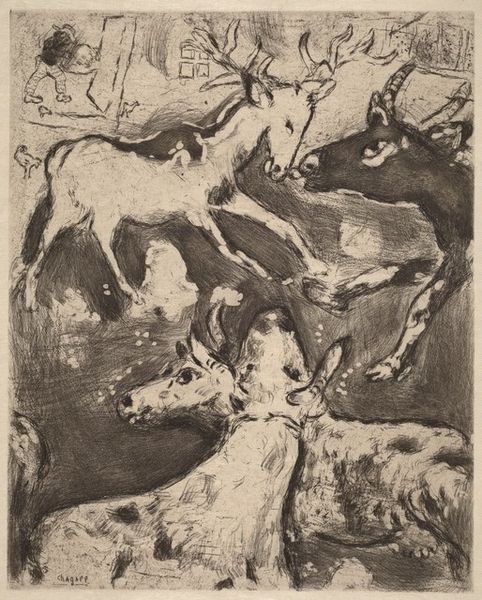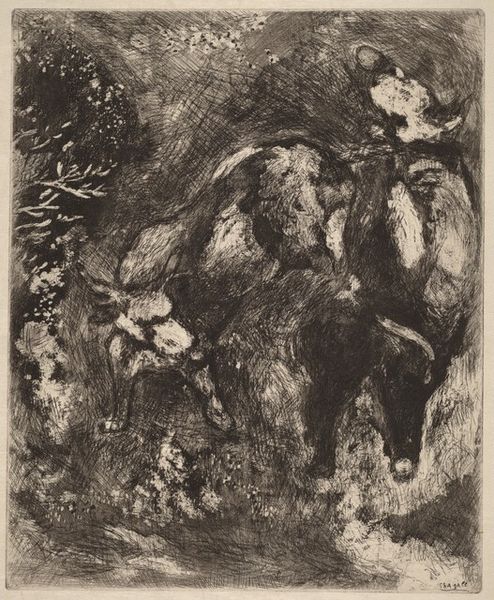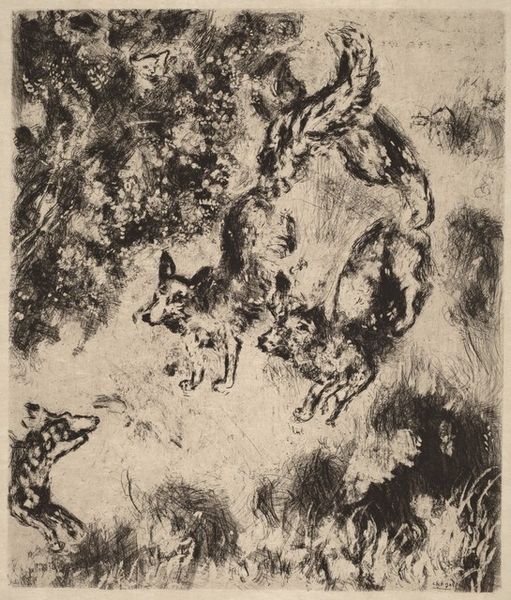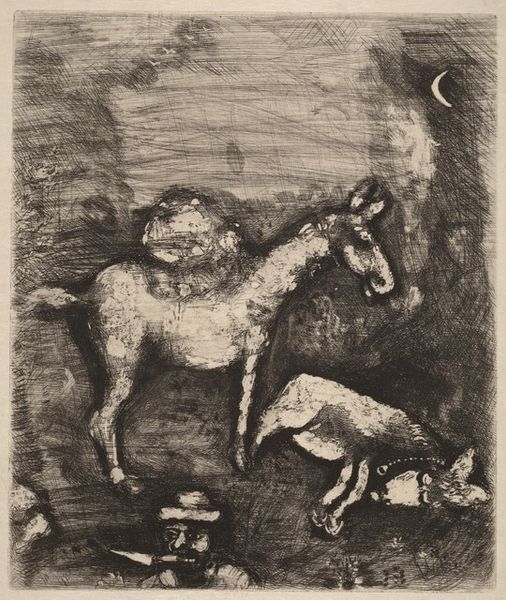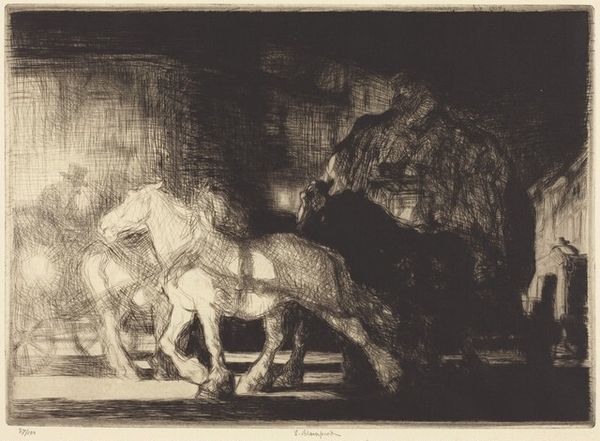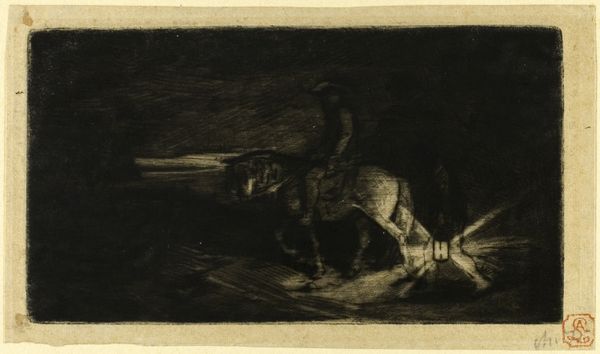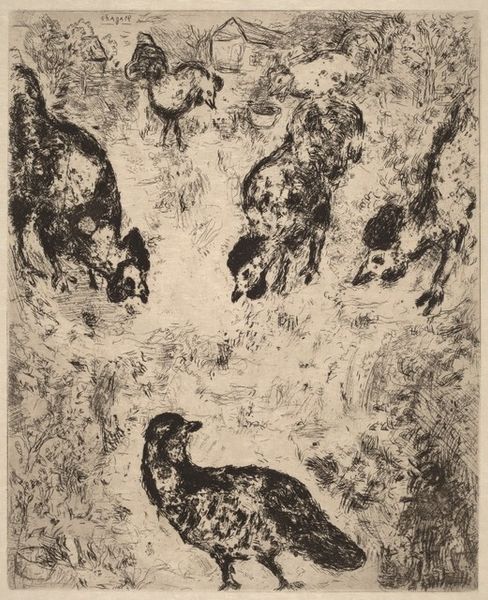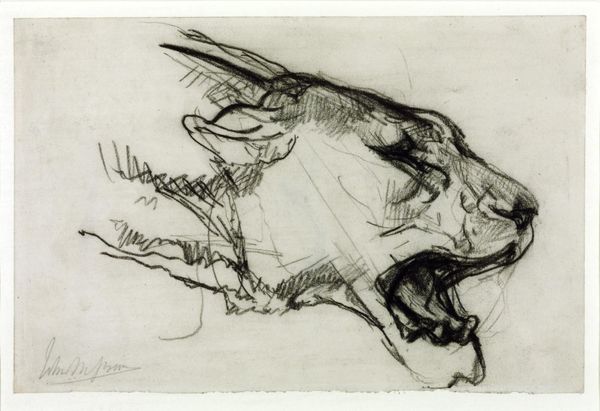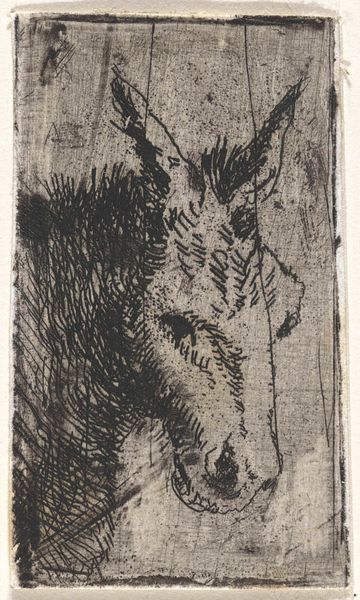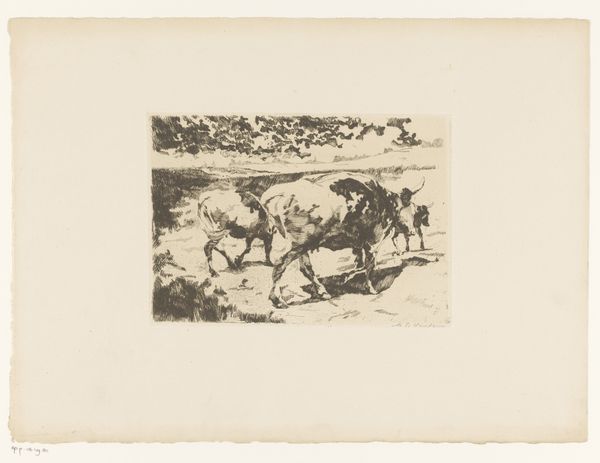
Copyright: National Gallery of Art: CC0 1.0
Editor: So, this is Marc Chagall’s "The Two Goats," from the late 1920s, made with etching, charcoal, and ink. It's interesting – the image is fairly simple, but there’s something quite raw about the interaction between the animals. What symbols jump out to you in this image? Curator: The goats, poised for conflict under a celestial moon, resonate with potent symbolism. Think of the goat as a persistent image throughout various cultures - representing virility, stubbornness, and even sacrifice. Their imminent clash speaks to primal struggles, the tension between opposing forces, wouldn’t you agree? Editor: I do. I was reading the landscape itself contributes to that tension. It’s kind of bleak and sparse, adding to the overall sense of impending drama. Curator: Precisely. The stark landscape acts as a stage, amplifying the symbolic weight of the encounter. Consider, too, the presence of the moon. What does the moon suggest to you? Editor: Cycles? Duality? Maybe something hidden? Curator: It echoes the cyclical nature of conflict and reconciliation. The light and dark halves mirroring the push and pull between the goats, but beyond that the constant interplay of light and shadow in our own psychological landscapes. It begs us to consider not just *what* they are fighting about, but what they *represent*. Editor: I see what you mean. The goats could be stand-ins for larger social conflicts. It's more than just an animal drawing. Curator: Exactly! Chagall uses deceptively simple images to tap into the reservoirs of human experience. We recognise these archetypes. His artistic project highlights that images carry with them centuries of social and psychological information. Editor: That’s fascinating! It makes me think differently about how artists use familiar images to tell us something new about ourselves. Curator: Indeed. Chagall prompts us to actively decipher images; it’s an enriching encounter, don’t you agree?
Comments
No comments
Be the first to comment and join the conversation on the ultimate creative platform.

